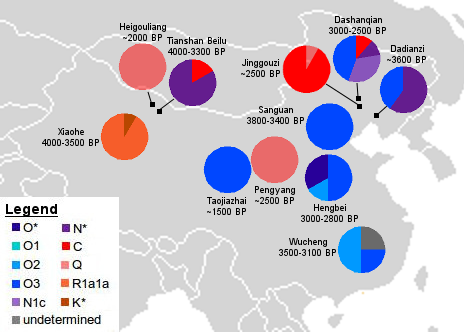Graphic reconstruction of the skull of a man from grave 3 of the Shatar-Chuluu burial ground (AT-25): full face (a) and profile (b):
afanasievo culture people
Follow along with the video below to see how to install our site as a web app on your home screen.

Note: This feature currently requires accessing the site using the built-in Safari browser.



Thanks, JohenTianshanbeilu culture:

"Abstract: This study examines within-group variation based on craniometric data obtainedfrom a sample of 24 Bronze Age skeletal human remains recently excavated along the TianshanNorth Road, Hami region, Xinjiang. Statistical analysis was applied to 77 craniometric variablesof both male and female groups. Morphological affinities showed evidence of a markedbiological dissimilarity between the Tianshan North Road group and control groups, andalso a considerable distance within Tianshan North Road male group. According to a reviewof previous archaeological and genetic research in this region, this result could indicate theskeletal population from the Tianshan North Road cemetery has its own unique morphological characteristics and was a group of people living in a transitional area occupied by both easternand western ancestors."
Figure 1

https://academic.oup.com/nsr/article/6/5/1024/3052682
This thread has been viewed 78182 times.
